Rice and salt are two essential items in important Vietnamese ceremonies, including the New Year ceremony. So, what should we do with the rice and salt after the ceremony is over? The answer lies in the following article. Join us to find out more!
1. Understanding the Tradition of Offering Rice and Salt
The tradition of offering rice and salt has a long history and holds significant meanings. These roles and meanings are expressed through various aspects:
- Health Aspect: Rice and salt are two essential foods for our health. Every day, rice provides more than 20% of the necessary energy for our bodies, including essential nutrients such as starch and various types of vitamins. Meanwhile, salt plays a crucial role in maintaining the body’s fluid balance.
 Rice and salt hold important roles and meanings for humans.
Rice and salt hold important roles and meanings for humans.
- Feng Shui Aspect: According to feng shui experts, rice and salt are considered auspicious items. When used appropriately, they can bring good luck, health, and abundant wealth.
- Folk Beliefs: Salt and rice are believed to ward off evil spirits and bad luck, attracting good fortune and health. Additionally, offering rice and salt is a way to express gratitude to ancestors and deities for bestowing the gift of the rice civilization upon humankind.
2. Which Ceremonies Require Offering Rice and Salt?
In reality, almost all significant and minor ceremonies in Vietnam include rice and salt. The following are some of the most important and prominent ceremonies in our country’s customs that require rice and salt. Please take a look.
Rice and Salt for New Year’s Eve Ceremony
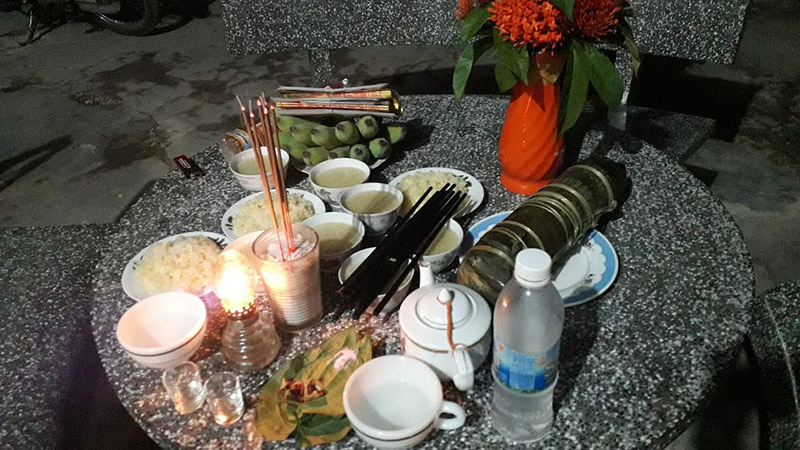 The New Year’s Eve ceremony is an important tradition in Vietnamese culture.
The New Year’s Eve ceremony is an important tradition in Vietnamese culture.
When it comes to significant ceremonies of the year, people often mention the New Year’s Eve ceremony first. This traditional ritual holds a crucial role in Vietnamese culture. On this occasion, rice and salt are indispensable elements on the altar, used to ward off bad luck from the old year and attract wealth and good fortune for the new year.
For further information: What does the 30th of the Lunar New Year, the Year of the Rabbit, entail?
Rice and Salt for the Hungry Ghost Ceremony on the 15th of July
 Offering food to hungry ghosts on the 15th day of the seventh lunar month.
Offering food to hungry ghosts on the 15th day of the seventh lunar month.
According to folk beliefs, from the 2nd to the 15th of July on the lunar calendar, the Gates of Hell are open. During this time, people perform rituals to save suffering souls. Rice and salt are used in the Hungry Ghost Ceremony as a way to make offerings and help these hungry ghosts who have no one to worship them.
Rice and Salt for the Groundbreaking Ceremony
The Groundbreaking Ceremony is performed when constructing a building, typically a bridge or a house. During the ritual, the person making the offerings will ask for permission from the God of the Land responsible for that area before starting construction. Additionally, the groundbreaking ceremony seeks permission from any lingering spirits (if present) to leave peacefully so that the construction can proceed smoothly.
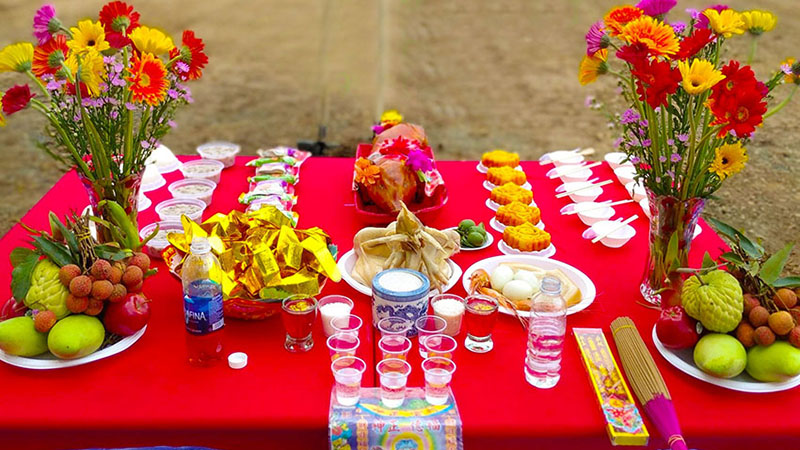 The groundbreaking ceremony before the start of construction.
The groundbreaking ceremony before the start of construction.
To perform the groundbreaking ceremony, the person making the offerings should prepare the necessary items, such as (betel, areca nut, and fruit), a rooster, incense, candles, paper money, and most importantly, rice and salt. Preparing these offerings adequately will ensure a smooth and effective ceremony.
Rice and Salt for the Grand Opening Ceremony
The Grand Opening Ceremony is a traditional ritual performed when a business owner wishes to commence their enterprise. According to folk beliefs, the land everywhere is governed by the Earth God, and it is necessary to seek permission from this deity for smooth and prosperous business operations.
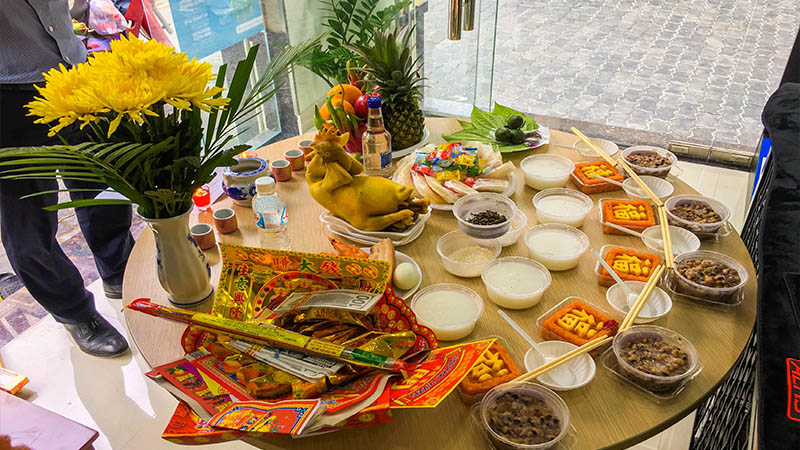 Performing the grand opening ceremony correctly brings good luck to the business.
Performing the grand opening ceremony correctly brings good luck to the business.
In such an important ceremony, it is only natural that rice and salt, symbols of good fortune and wealth attraction, are included. Praying for smooth sailing and abundant wealth in business, one must ensure to follow the proper rituals, arrange the offerings meticulously, and never forget the rice and salt!
3. What to Do with the Rice and Salt After the Ceremony?
What should be done with the rice and salt after the ceremony? Almost everyone knows that after the ceremony is over, the person performing the ritual should sprinkle the offered rice and salt around. However, not everyone knows the specifics, such as how and where to sprinkle them.
The method of sprinkling salt and rice may vary depending on the customs of each region and locality. In some areas, rice and salt are mixed before sprinkling, while in others, they are sprinkled separately, and the order of sprinkling may also differ according to local beliefs.
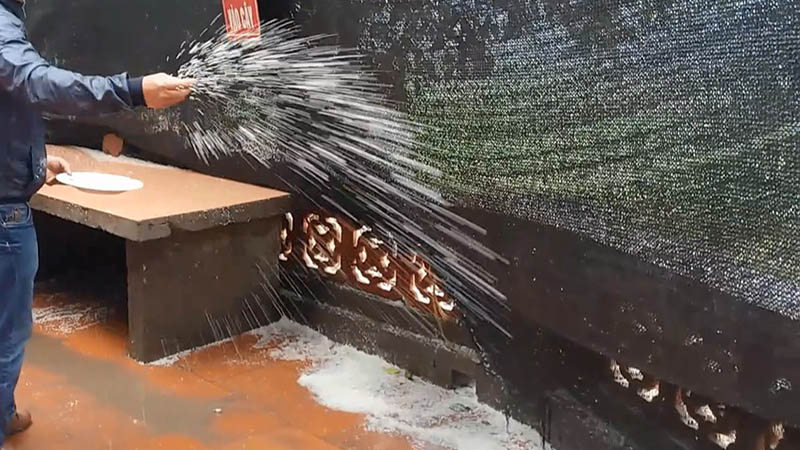 Rice and salt are usually sprinkled in front of the altar or in front of the ceremony area if held outdoors.
Rice and salt are usually sprinkled in front of the altar or in front of the ceremony area if held outdoors.
Most people believe that all these methods are correct, and what matters is not the order or the way they are sprinkled but the sincerity and genuine intention to help the wandering spirits find nourishment.
As for the location, it is recommended to sprinkle the rice and salt in front of the altar or in front of the ceremony area if held outdoors. While sprinkling the rice and salt, don’t forget to chant prayers, ensuring that the wandering spirits receive the offerings and leave without causing any trouble to the host, thus bringing good luck, health, and wealth to the family.
4. Things to Keep in Mind When Offering Rice and Salt
Although it is said that sincerity is the most important aspect of worship, when it comes to such a sacred custom, one should be careful to perform the rituals correctly and avoid any taboos to ensure a smooth and effective ceremony. Here are a few things to keep in mind when offering rice and salt:
- The size of the rice and salt containers should be appropriate for the altar’s size, neither too small nor too large.
- Choose high-quality porcelain containers with auspicious patterns and designs for the rice and salt. Ensure that the containers are from a reputable brand and have a clear origin.
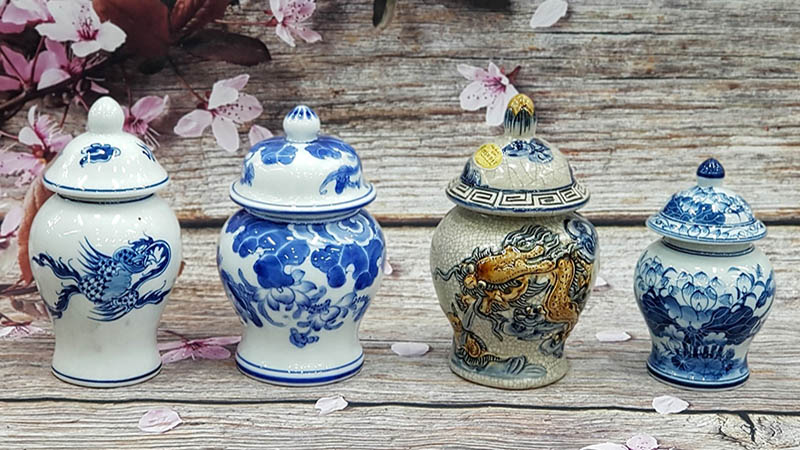 Choose porcelain containers with auspicious patterns for a lucky and beautiful presentation.
Choose porcelain containers with auspicious patterns for a lucky and beautiful presentation.
- Select high-quality rice and clean salt. Never reuse rice and salt from previous offerings.
- Use separate containers for offering rice and salt, and do not use them for daily household purposes.
- Opt for containers with narrow necks and wide bodies to symbolize health, peace, and the attraction of wealth and good fortune for the family.
So, we have shared with you the information about the tradition of offering rice and salt, how to sprinkle them after the ceremony, and some important notes to keep in mind. We hope that this knowledge will bring you and your family luck, health, and prosperity. Thank you for joining us.


































